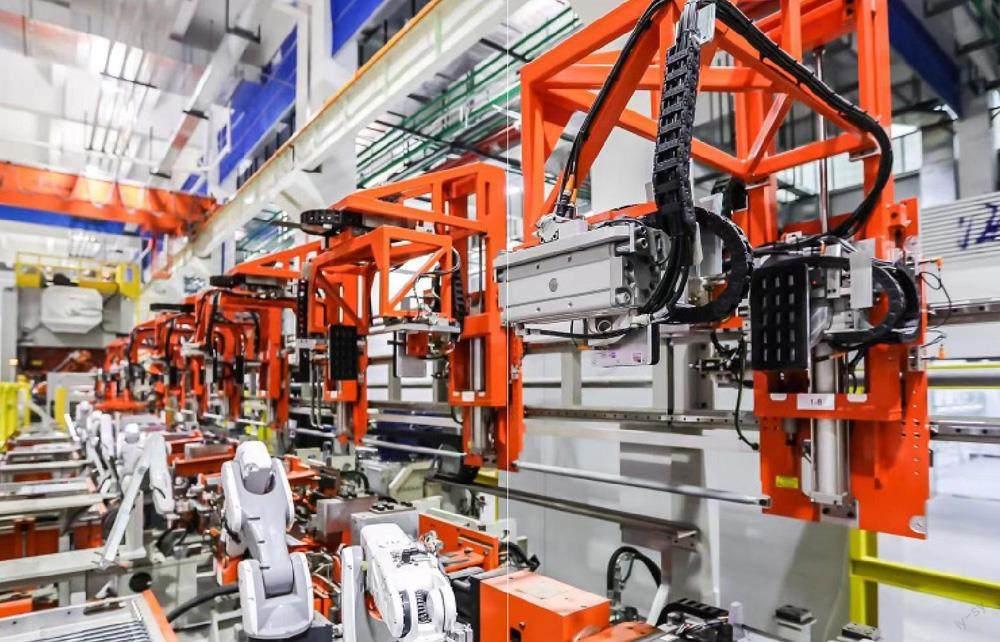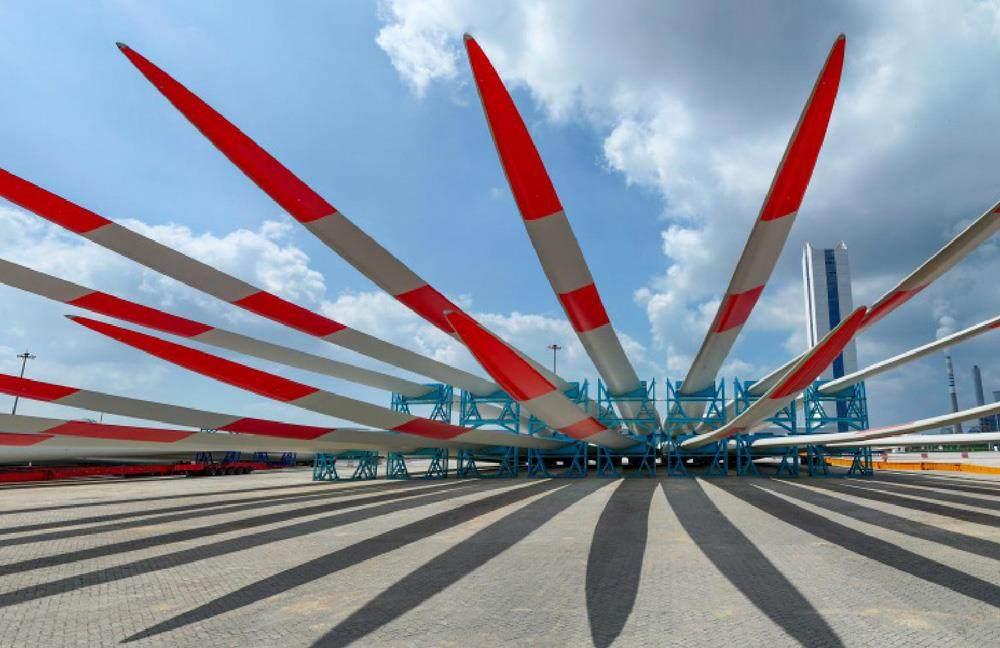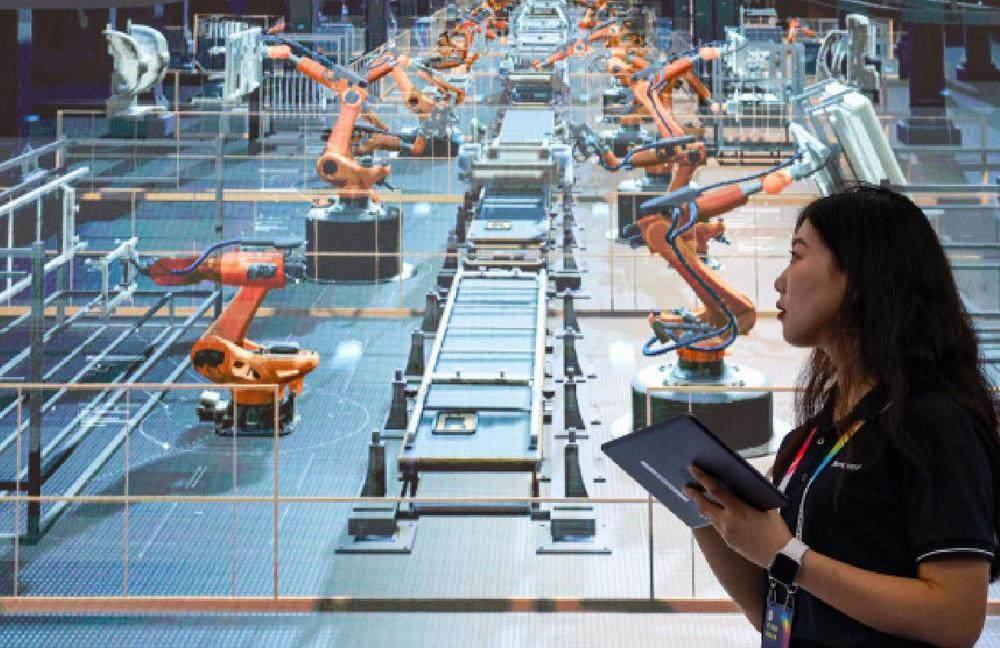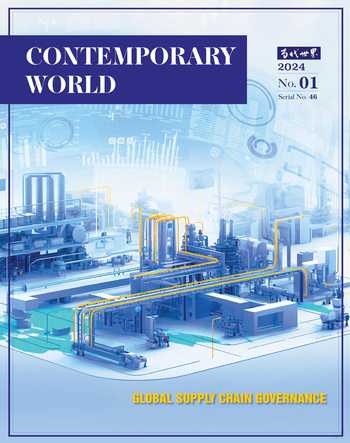Global Industrial and Supply Chain Restructuring: Background, Characteristics and Development Trends
Zhang Lijuan



The restructuring of global industrial and supply chains is a hot issue in todays world, and as a result of the once-in-a-century changes and intensified geopolitical and economic competition, the demand for global industrial and supply chain security has risen sharply, with government departments and transnational corporations (TNCs) becoming the most critical stakeholders. Governments carefully calibrate industrial and trade policies from the perspective of national strategies to create industrial chains that support national competitive advantages, and multinational corporations respond to geopolitical risks by prioritizing industrial and supply chain security and sustainability over capital and efficiency. Against the backdrop of changes unseen in a century, decelerating globalization and global economic downturn, the characteristics and future trends of global industrial and supply chain restructuring are worth paying attention to.
Background of Global Industrial and Supply Chain Restructuring
During the upswing of economic globalization, countries generally benefited from and were open to globalization, and TNCs laid out their industrial and supply chains globally on the basis of their comparative advantages, and the location of their industrial and supply chains was seldom interfered by national security factors, and the national security exception clause of international trade rules was rarely invoked. However, since the outbreak of the COVID pandemic, the security needs of countries for their industrial and supply chains have risen sharply, and they are highly concerned about the asymmetric dependence of their industrial and supply chains on the outside world. Since the creation of the World Trade Organization (WTO) in 1995, security issues in the context of national security have never been as direct a constraint on international trade, capital flows and industrial layout as they are now, and have had an unprecedented impact on the evolution of global trade patterns. Major developed economies have made more efforts to adjust their industrial policies to promote the industrial and supply chain autonomy and control, more near-shore dealings, more cooperation with the allies and more regionalized, thus promoting the reconfiguration of the industrial and supply chain. That further triggered rising demand by the governments and the business community of all countries for the global industrial and supply chains security and resilience, global trade and investment. Pan-securitization became obvious, and in a sense, strengthening the resilience of industrial and supply chains has become a tool for geopolitical and economic competition. All parties are more concerned about relative rather than absolute economic gains, focusing on the relationship between the resilience of the industrial and supply chain and national security.They are highly concerned about the security risks brought about by economic interdependence between countries and the digital economy, and the there has shown new features in resulting impact on the geo-economic order, which highlights a historic change in the balance between economy and security, and relations between selective country-specific economic and trade cooperation and geo-economy have become closer.
The widespread application of digital technology and the rapid development of the digital economy are also contributing factors to the sharp rise in the security needs of all countries. The worlds major economies attach great importance to the digital economy and seize new opportunities for industrial change. Data security and technological security are key areas of international competition and new challenges to the economic security of all countries. At the same time, the competition among big countries in the field of digital economy and technology has become a key variable in the reconstruction of the global industrial and supply chain, the digital trade rules are the focus of the game among all parties, and the establishment of a global digital economy governance system in line with the interests of ones own national security is the goal of the game. As a component of non-traditional security, data security is increasingly being highly valued by all countries. From a global perspective, the objectives of trade and investment competition are also undergoing structural changes, and the focus of competition is not on general trade in goods or traditional manufacturing, but on high-end trade in services and advanced manufacturing related to the digital economy, with the ultimate goal of safeguarding their own development security and technological competitive advantages.
Characteristics of Global Industrial and Supply Chain Restructuring
The restructuring of the global industrial and supply chain is the result of changes in economic factors, especially market factors. Different from the past, the current restructuring of the global industrial and supply chain presents some new features. As the key stakeholders, government departments have actively launched industrial policies to directly participate in it, and multinational corporations have put safety in the first place when restructuring the industrial and supply chain, digitization as well as green and low-carbon have become the important basis for decision-making on trade and investment.
I. Government-Led Industrial Policy to Promote Reconstruction of the Industrial and Supply Chain
In the process of Western economic development, the effective allocation of resources by the market is highly spoken, and government intervention is widely criticized. In developed economies, industrial policy used to be regarded as interference in the market economy, but this perception is changing. The article “Industrial Policy: It Doesnt Work” published in Harvard Business Review, Vol. 11, 1983, argues that industrial policy is profoundly affected by the political system and economic conditions of a country, and that the political decision-making process in the United States poses an insurmountable obstacle to the implementation of industrial policy, and that the choice of industrial policy should be avoided in the event of certain problems in the economy. The article “A New Era of Industrial Policy Has Arrived”, published in Harvard Business Review 9/10, 2023, points out that we are entering a new world order in which governments around the world increasingly use industrial policy to influence where companies are established and operated, what products they sell, and to whom they sell, and that a new era of industrial policy has arrived. Unlike in the past, in the current restructuring of the global industrial and supply chain, government departments have not given way to the market, but rather have taken the initiative to work with TNCs to deal with negative externalities by formulating specific industrial policies to promote, constrain or guide the direction of development of their industries and their global layout.
II. Participation of TNCs in the Strategic Realignment of Global Industrial and Supply Chains
TNCs are the shapers, maintainers and direct stakeholders of global industrial and supply chains. TNCs control the global production, supply and marketing networks of major industries, including the global industrial and supply chain, industrial chain and value chain, and their business strategies have a direct impact on global resource allocation, international trade patterns and investment flows. The global industrial and supply chain crisis caused by the COVID pandemic has prompted multinational corporations to comprehensively reconsider their global operation layout and reassess whether the previous industrial and supply chain model is still sustainable. TNCs should not only focus on effective resource and capital allocation in transnational production and marketing networks and layout cross-border trade and investment based on the principles of efficiency and cost, but also avoid the risks that may be caused by the restructuring of the geo-economic order and geo-political games.
At present, the strategic adjustment of TNCs industrial and supply chain restructuring is still in progress, and most TNCs are still exploring the best plan for rearranging the global industrial and supply chain, and there is a great deal of uncertainty in the future. Compared with building new industrial and supply chains, TNCs tend to reinforce their existing industrial and supply chains to form new combinations to prevent security risks. For example, establishing “buffer stock” and “dual-source procurement” systems, adjusting outsourcing regions to implement near-shore strategies, and increasing supplier market diversification and regionalization options. Influenced by the heterogeneity of industries, there are also big differences in the strategic choices of TNCs in the adjustment of industrial and supply chains. Some industries are suitable for near-shore outsourcing or partial relocation, while some industries will maintain the existing chain but increase the options. For example, some TNCs favor the “China+1” or “Singapore+1” strategy to maintain the existing production, supply and marketing networks, while building a new mechanism to prevent risks in the industrial and supply chain.
III. Accelerating the Digitalization of the Industrial and Supply Chain
The rapid development of the digital economy has not only created new growth and new demand, but also become an important engine for the transformation and upgrading of various industries. According to Digital China Development Report (2022), the scale of Chinas digital economy will reach 50.2 trillion yuan in 2022, accounting for 41.5% of GDP, and become an important engine for stabilizing growth and promoting transformation. The rapid development of digital technology and digital trade has had a transformative impact on the mode of operation and efficiency of the global industrial and supply chain. The COVID pandemic has become a catalyst for accelerating the digitization of industrial and supply chains and promoting the application of new technologies, and governments have introduced policies aimed at using digital technologies to improve the efficiency of industrial and supply chains and strengthen technological innovation to cope with the impact of industrial and supply chains.
The digitization of industrial and supply chains is an important dimension of its global development. As the industrial and supply chain requires more and more efficient and reliable delivery of goods and services, the rapid advancement of industrial and supply chain digitization will continue. The degree of digitization of the industrial and supply chain has a bearing on the competitive advantage of the economy among countries, and the country-specific differences in the degree of digitization of certain industries will also have a corresponding impact on the geographic reconfiguration of the industrial and supply chain.
IV. Green and Low-Carbon Industrial and Supply Chain Speeds Up Development
Green and low-carbon industries are the frontiers of global competition. Green and low-carbon technological innovation has entered a period of rapid uptrend. And new energy, new materials and new technologies are accelerating their iterations and upgrades. Countries are taking the construction of green industrial and supply chains and the promotion of the integration and development of strategic emerging industries as a new point of economic growth. In recent years, the green industrial and supply chain represented by smart car chain, green agricultural chain, clean energy chain, etc. has been expanding rapidly, which has far-reaching impacts on the upgrading of industrial structure and systematic energy saving and carbon reduction. Major economies around the world have accelerated the development of green industrial and supply chains through government actions. In January, 2023, China released a white paper on Chinas green development in the new era. Chinas economy has made remarkable achievements in green and low-carbon transformation, especially in green and low-carbon areas such as new energy vehicles, photovoltaic solar energy and lithium batteries, which have formed a comparative advantage and injected new kinetic energy into industrial restructuring. The global competition for green and low-carbon industrial and supply chains has just begun, and the competition and cooperation among major economies around the world will determine the direction and stability of the future development of this key industrial and supply chain, and will have a far-reaching impact on the future industrial security and the new industrial revolution.
In recent years, multinational corporations have been increasingly incorporating “environmental, social and governance” (ESG) elements into their investment decision-making process in the construction of green industrial and supply chains. Investment flows and green and low-carbon projects have been widely emphasized. Major economies are actively promoting the convergence of industrial policies with the global sustainable development goals, and multinational corporations have begun to choose to cooperate with suppliers that are committed to complying with social and environmental standards, and to take green and low-carbon as an important criterion for selecting partners and jointly constructing industrial and supply chains. With the rapid growth in the scale of ESG investments and the continuous improvement of investment systems and ratings, environmental, social and governance factors have become the driving force for sustainable economic and social development and will influence the future restructuring of the global industrial and supply chain.
Future Trends in the Evolution of Global Industrial and Supply Chains
The global industrial and supply chains are undergoing accelerated adjustment, and in the face of global economic uncertainty and historical changes in the geopolitical and geo-economic competitive environment, the future reconstruction of the global industrial and supply chain will endure a relatively long evolutionary process, and its trend will be affected by the comprehensive impact of various international, domestic and regional political and economic factors.
First, changes in the international political and economic situation and its uncertainty will have a long-term impact on the evolution of the global industrial and supply chain. During the heyday of globalization, countries opened their markets and expanded trade as much as possible. In the current process of reconstructing the geo-economic order, trade protectionism has intensified the fragmentation of the geo-economy, and the development of cross-border trade in the direction of multilateralization and liberalization has been hindered. The policy orientation of major developed economies and the publics perception of trade liberalization have taken a historic turn, which poses a threat to the construction of a more open and resilient industrial and supply chain.
Second, the repair and reconstruction of the industrial and supply chains will evolve in parallel on both tracks. Multinational corporations are paying attention to the repair of the original industrial and supply chain after the pandemic, and at the same time, they are also planning for the reorganization of the industrial and supply chain in the future. According to the IMFs World Economic Outlook report in October 2023, the industrial and supply chain disrupted by the pandemic has basically returned to normal, and transportation costs and suppliers delivery times have also returned to pre-COVID levels. However, uncertainty and instability in the industrial and supply chain remain high, and among the many options for the reconfiguration of the industrial and supply chain, the dominance of offshoring may continue to decline, intra-regional cooperation mechanisms are expected to increase, and the trend towards short-chaining will continue. Although globalization will not stop, and the huge and efficient global industrial and supply chain network that has been established over the past half century will not disappear completely, the internal and external environment of TNCs offshoring strategy is deteriorating, and the policy space is being squeezed.
Third, government industrial policy intervention in the industrial and supply chain will continue, and trade in key raw materials related to high-tech and advanced manufacturing will continue to be severely restricted. Some of these key raw materials are essential parts for advanced manufacturing, some are essential components for after-sale maintenance services of key products, and some are key raw materials for military and high-tech industries. Based on industrial security considerations, the competitive and strategic trade protection of major economies on the above raw materials is beginning to emerge, focusing on cultivating the domestic supply of key products such as semiconductor chips and new energy vehicles, and suppressing competitors by means of trade restrictions. Geo-economic fragmentation has led to a sharp widening of the differences in the prices of commodities, such as key minerals, across regions. This is a warning that it will create serious macroeconomic risks in the future.
The global economy is still in a recovery phase, and the global industrial landscape is in the midst of geo-reconfiguration and low-carbon transition adjustments. As the evolution of the global pattern is highly uncertain, the reconstruction of the global industrial and supply chain will continue to be affected by the superposition of global markets, geopolitics, geo-economics and other factors, and the security of the industrial and supply chain has become highly related to national interests, and the competition around the industrial and supply chain among major countries, TNCs and regional organizations will continue to evolve. In the long run, the continuation of the competitive pattern of big countries may further promote the relocation of advanced manufacturing industries, while near-shore outsourcing and friendly-shore outsourcing may further increase. At the same time, we should also see that the variables affecting the evolution of the global industrial and supply chain in this long-term process are quite complex, including political factors and government intervention, as well as economic factors and market factors, and various factors themselves have great uncertainty. The future reconfiguration of global industrial and supply chains is unlikely to be accomplished overnight, and in general will show a relatively long evolutionary process. The practice of global industrial and supply chain in the past half a century has shown that a mature global industrial and supply chain system requires the effective allocation of various resource elements in both international and domestic dimensions, and that the country-specific policies led by trade openness and the rule-based global economic governance system are the important foundation and guarantee of the resilience of global industrial and supply chain, which also bring great benefits to the global economy and all countries in the world. Without either of them, the security and stability of the global industrial and supply chain and global economic development will face greater risks.
——————————————
Zhang Lijuan is Researcher of the Institute of National Governance at the Shandong University
- 當(dāng)代世界英文版的其它文章
- International Supply Chain Cooperation and China’s Role
- Analysis and Prospects of the World Economic Situation 2023-2024
- The International Security Situation in 2023: Seeking Order Change and Reshaping Amidst Turbulence and Uncertainty
- The Cultural Gene and Historical Experience of China’s Peaceful Development
- Developments in the U.S. Republican Party Since the 2020 Election
- The Rise and Impacts of Kenya’s Hustler Movement

